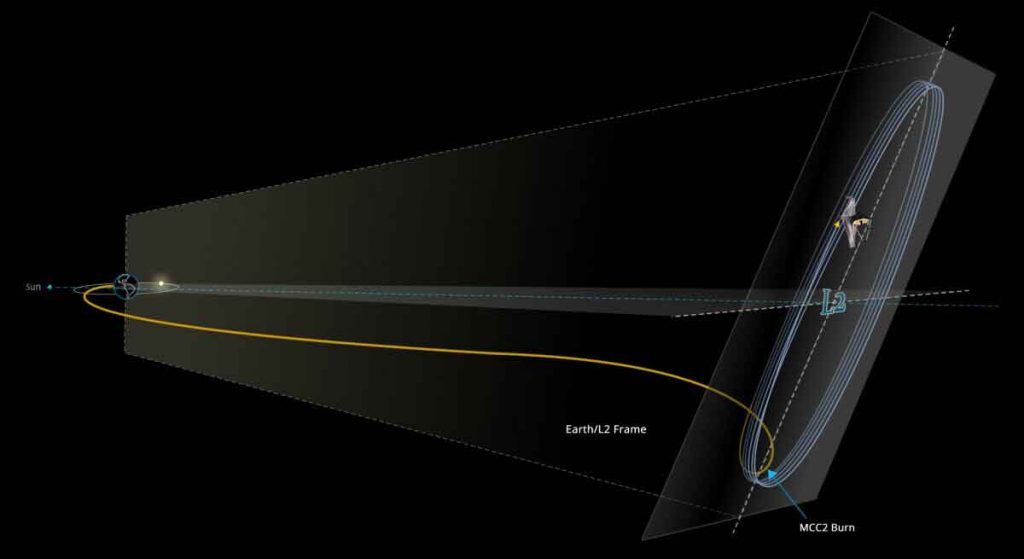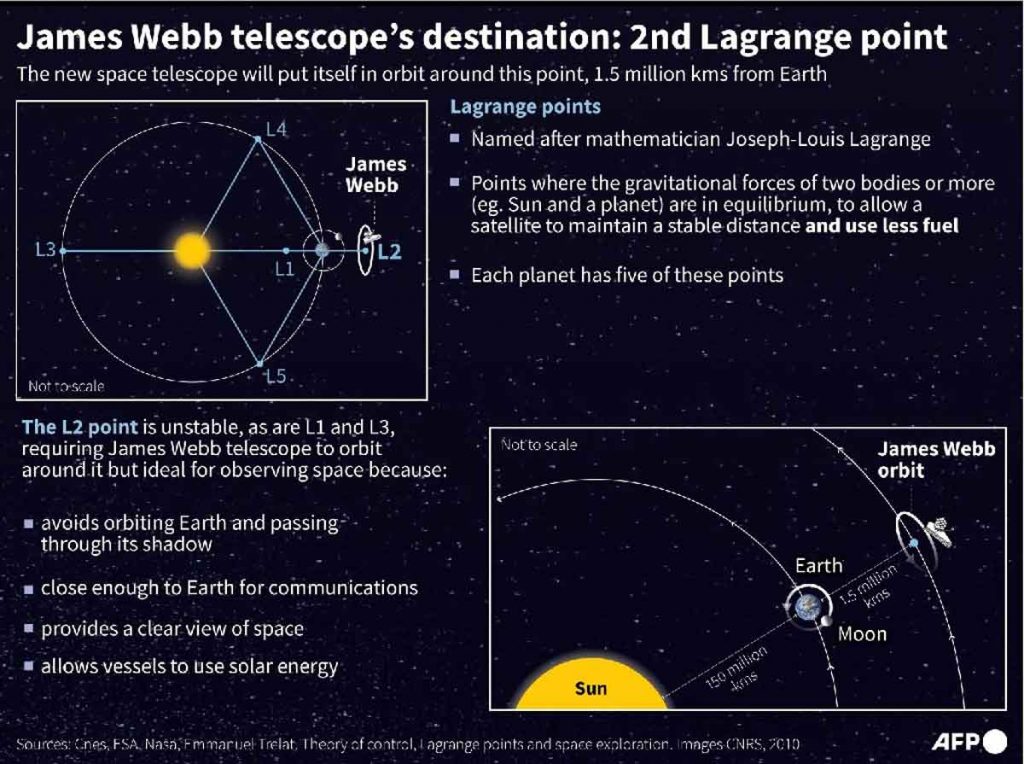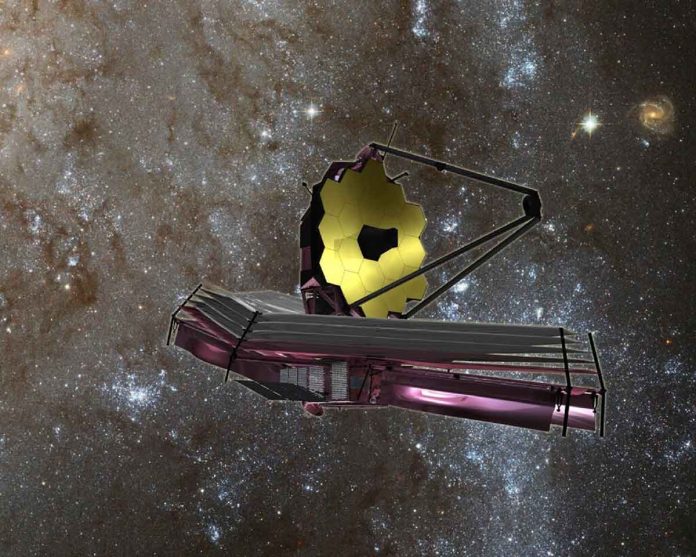The James Webb Space Telescope has fired its thrusters. It has reached its orbital destination around a million miles away from our planet. This is a key milestone on its mission to study cosmic history.
The observatory fired its thrusters for five minutes at around 2:00 pm Eastern Time to reach the so-called second Lagrange point or L2. There it will have access to nearly half the sky at any given moment.
NASA said, it will stay in line with the Earth as it moves around the Sun. It will allow Webb’s sunshield to protect its sensitive equipment from heat and light.
Webb needs the Sun, Earth and Moon to all be in the same direction for effective protection. The cold side operates at – 370 degrees Fahrenheit.
The thruster firing is known as an orbital burn. It is the third such maneuver since Webb was launched on an Ariane 5 rocket. Webb had gotten too much thrust from the rocket. So, it wouldn’t be able to turn around to fly back to Earth. It would expose its optics to the Sun.

Scientists decided to slightly underburn the rocket firing. They used the telescope’s own thrusters to make up the difference.
Webb is one of the most expensive scientific platforms ever built. It can be compared to the Large Hadron Collider at CERN.
Halo orbit
Webb will orbit in an area of space known as a Lagrange point. Here the gravitational pull from the Sun and Earth will be balanced by the centrifugal force of the rotating system.
Italian French mathematician Joseph-Louis Lagrange has first theorized the object at one of these five points. It will remain stable and not fall into the gravity well of the Sun and Earth. This required only a little fuel for adjustments.
Webb won’t sit precisely at L2. It will go around it in a “halo” at a distance similar to the Earth and Moon. It will complete a cycle every six months. It will allow Webb to remain thermally stable. It will also help to regenerate power from its solar panels.

The European Space Agency’s Herschel and Planck observatories have missioned L2 before.
But Webb’s position will allow continuous communications with Earth via the Deep Space Network.
NASA has already completed the process of unfolding Webb’s massive golden mirror. This will collect infrared signals from the first stars and galaxies that formed 13.5 billion years ago.

